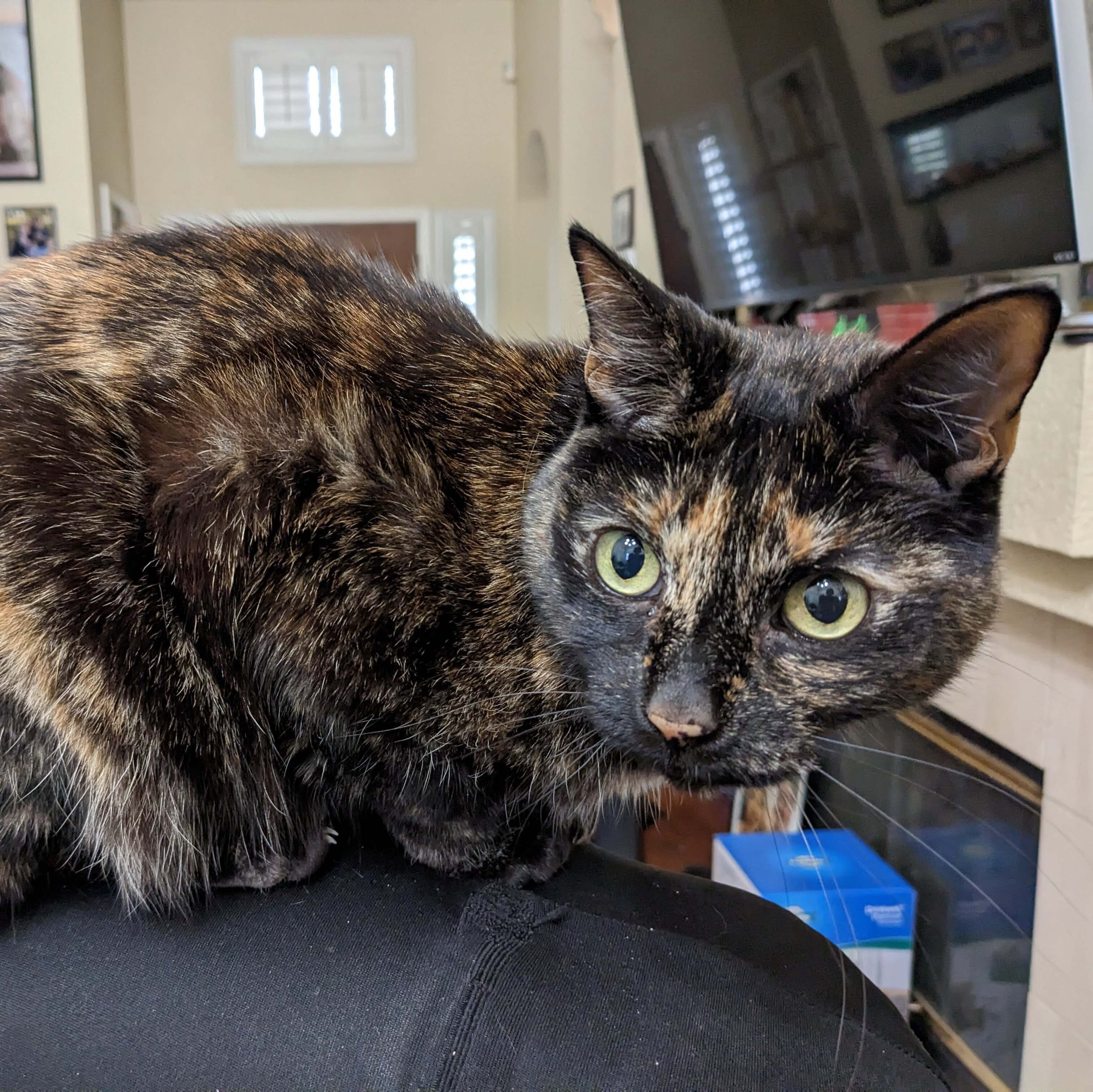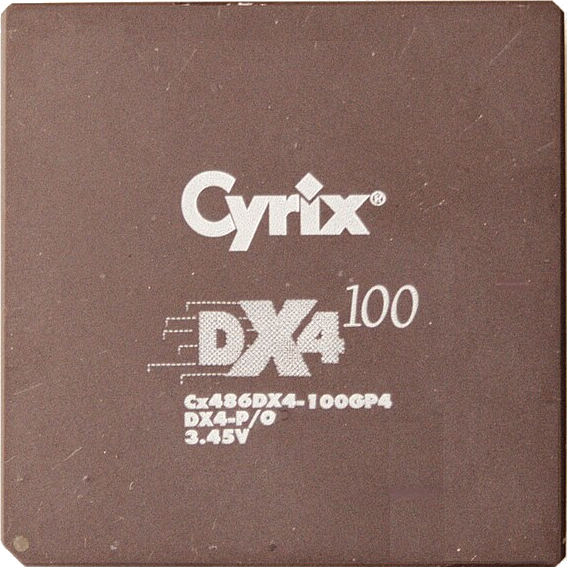I have backups on a backup hard drive and also synced to B2, but I am thinking about backing up to some format to put in the cupboard.
The issue I see is that if I don’t have a catastrophic failure and instead just accidentally delete some files one day while organising and don’t realise, at some point the oldest backup state is removed and the files are gone.
The other thing is if I get hit by a bus and no one can work out how to decrypt a backup or whatever.
So I’m thinking of a plain old unencrypted copy of photos etc that anyone could find and use. Bonus points if I can just do a new CD or whatever each year with additions.
I have about 700GB of photos and videos which is the main content I’m concerned about. Do people use DVDs for this or is there something bigger? I am adding 60GB or more each year, would be nice to do one annual addition or something like that.
I’m using blu-ray disks for the 3rd copy, but I’m not backing up nearly as much data as you are.
The only problem with optical media is that you should only expect it to be readable for a couple of years, best case, at this point and probably not even that as the tier 1 guys all stop making it and you’re left with the dregs.
You almost certainly want some sort of tape option, assuming you want long retention periods and are only likely to add incremental changes to a large dataset.
Edit: I know there’s longer-life archival optical media, but for what that costs, uh, you want tape if at all possible.
Same.
Bought a Blu-ray burner and “archive grade” disks for third location backups.
I made a list of files that is just a text document (3MB!) that sits on the root of the Blu-ray. There’s probably a better way of doing that, but it works for me.
Hmm I am keen for something that could be left in the cupboard for 50 years and still works when brought out.
What does it take me to do home tape storage? Do the tapes needs to be stored with climate control or are they pretty stable? Is it feasible for the average person to load the contents?
I’m thinking of pulling a suitcase out of the cupboard of all the baby photos, but digital files or photo and video.
So, 50 years isn’t a reasonable goal unless you have a pretty big budget for this. Essentially no media is likely to survive that long and be readable unless they’re stored in a vault, under perfect climate controlled conditions. And even if the media is fine, finding an ancient drive to read a format that no longer exists is not a guaranteed proposition.
You frankly should be expecting to have to replace everything every couple of years, and maybe more often if your routine tests of the media show it’s started rotting.
Long term archival storage really isn’t just a dump it to some media and lock it up and never look at ever again.
Alternately, you could just make someone else pay for all of this, and shove all of this to something like Glacier and make the media Amazon’s problem. (Assuming Amazon is around that long and that nothing catches fire.)
Hmm damn. I don’t really think cloud is the right answer for what I’m trying to do.
I disagree that formats like JPEG won’t be readable in 50 years. I feel like there would be big demand for being able to read the format even if it’s been superceded, on account of all the JPEGs that still living people have.
Maybe I get a big drive. Each year I copy over files from the last year. Every X years I swap the hard drive for a new one, copy all data.
How can I tell if individual files get corrupted? Like the hard drive failed in that section, then I copy the corrupted file to the new drive, and I’d never know. Can I test in bulk? 50k+ photos and videos so far.
The format is the tape in the drive, or the disk or whatever.
Tape existed 50 years ago: nothing modern and in production can read those tapes.
The problem is, given a big enough time window, the literal drives to read it will simply no longer exist, and you won’t be able to access even non-rotted media because of that.
As for data integrity, there’s a lot of options: you can make a md5 sum of each file, and then do it again and see if anything is different.
The only caveat here is you have to make sure whatever you’re using to make the checksums gets stored somewhere that’s not JUST on the drive because if the drive DOES corrupt itself, and your only record of the “good” hashes is on the drive, well, you can’t necessarily trust those hashes either.
Ah good thinking. I am thinking a spare drive that I update once a year with new content and replace every few years with a new drive is a good idea.
That could probably work.
Were it me, I’d build a script that would re-hash and compare all the data to the previous hash as the first step of adding more files, and if the data comes out consistent, I’d copy the files over, hash everything again, save the hash results elsewhere and then repeat as needed.
Yeah I think I should do something like this. I really want to make sure the files are not getting corrupted in storage without me knowing.
How can I tell if individual files get corrupted?
Checksums. A good filesystem will do this for you, but you can do it yourself if you want.
If you sync a drive with rsync or something periodically, it’ll replace files with different checksums, fixing any corruption as you go. Then smart tests should tell you if there’s any corruption the drive is aware of. I’m sure automated backup tools have options for this.
I specifically don’t want to be touching previous files on the drive, it should be addition only. So I may need to write a script to do the checks, or compare against a mirror drive. I can do this with the right filesystem, but I’m worried that if I use a filesystem not readable by Windows then it may not be layman-proof enough.
Then I’d go with FAT on a USB, which should be plenty portable into the future. You’ll want to replace it every 5-10 years, and check on it every other year or so.
That’s about as easy to use as I can think of. Decades down the road, physical media like DVDs and tapes may be difficult to find readers for, but USB is versatile enough that someone is bound to have access. Micro SD cards may also be a good option, as long as you keep a couple USB readers around.
I have a terrible track record with USB sticks, including completely losing a stack of photos because of a USB stick.
I’m now thinking the benefits of a nice error-correcting file system probably outweigh the benefits of using a widely supported one. So I might use a pair of mirrored hard drives with SATA->USB cable, then include instructions along the lines of “plug into my linux laptop to access, or take to a computer repair show if you can’t work it out”.
Cloud can be surprisingly cost effective, as part of a 3-2-1 backup.
Check out storj.io
Tape isn’t readable by normal people even if they found it tomorrow with a drive already configured to be used.
In 50 years good luck finding a working drive compatible with LTO4 when LTO32 is out (it’s backwards compatible only with previous gen).
Unless you write on the box “here there are the keys for 100k bitcoins” they’ll just trash the tape
Yeah from some other comments I think my initial plan (that I’ll research some more) will be:
- buy a new HDD, format with ZFS or btrfs for error correction
- copy data onto drive
- store in cupboard with sata-> USB cable and instructions about what it is, how to access .
- every year, load the previous year’s data onto the drive
- about every 5 years, replace the drive by copying onto a brand new one (timeframe will likely depend on when my other HDD drives die)
This way I should get a chance to update storage medium as technology changes as well.
you need to use fat32 if you want normal people to access the files
Otherwise, they will get the “You need to format the disk in drive D: before using it. Do you want to format it?” dialog, they blindly click “yes”, then they will mumble to themselves “weird, he left behind a massive collection of blank drives…”
This is why I can’t/don’t have a lot of the “best practices” in my family archive. I’m not encrypting local drives, I’m not using BTRFS, or a ZFS pool. If I did I’d have to ensure my Will provided for the lawyer to hire a tech shop to help recover them. No, exFAT and NTFS, in the clear so those left behind can just plug them in and get to making their own copies. Otherwise the archive would die with me.
Does that mean someone could steal my drives and go through my family photos? Sure. I hope it brings them much guilt, something a garbled encrypted drive could never do.
Oh shit you’re right. Argh ok I’m going to have to rethink that. Two drives and something to compare against each other to check for errors. I’m not sure about FAT32 as there are some multi-GB video files. Shit.
exFAT is a newer and viable alternative to FAT32, with better size limits and some pretty good cross-platform capabilities. That said, if your primary access is through Windows, NTFS may have some better features and is at least read-only on other platforms.
I don’t use Windows, I’m just thinking of someone needing to be able to pick up and use a drive, and for most people it’s going to be Windows.
Maybe I just need to leave instructions that specify it needs to be my laptop they use to get the photos off.
deleted by creator
I have 3 2 1 but I want the equivalent of a suitcase of photos in the cupboard. No family member is gonna be cleaning out my house as they move me to a rest home and stumble upon my Borg backup in B2 object storage. And if they do they won’t have the key. I want something a bit closer to physical.
I think an extra drive for cold storage is a good idea. My main backups are automated, this one I can add any new files done in the last year once a year, then back in the cupboard. I just need to make sure I’m rotating the drives so I don’t have the same one in storage for 50 years, and instead buy new ones every 5 years or so.
If this is your fear, why not just have a will or something that specifically describes what to do and where to go?
I have such a document, but it’s not quite the same. I’m just as worried about my dumb ass losing the borg key and all data along with it…
I’m thinking a clearly labelled hard drive with instructions, rotating the hard drive with a new one every 5 years or so.
Exactly. I have a document for my SO that describes what to do if I pass (where the money is, how the WiFi is set up, various important accounts, etc). It’s not a will (nothing about who gets what, though that’s assumed by the state to be my SO, or my kids equally if we pass together), just a document that explains the stuff I handle.
I have not used them myself, but M-DISC sounds like what you’re looking for. There are a few other alternatives listed on that Wikipedia article, too.
Thanks, I think the risk here is that there may not be hardware to read it.
From the suggestions here I’m thinking a hard drive with USB connection would be best. It won’t last 50 years but instead I’d replace it every 5 years or so. I’d use an error resistant file system and plug it in each year to add the new files.
This way I also get the chance to move it to newer technology in future instead of a new hard drive. It would then only need to survive for some period of time after I last replaced it, so there’s a good chance of it remaining readable for most of my life.
Thanks, I think the risk here is that there may not be hardware to read it.
M-Disc DVDs are readable by ordinary DVD drives. So you could simply put a USB DVD drive alongside those backup M-Discs on the shelf.
Yeah that’s an idea. It does seem like I’d need a lot of disks though. And I don’t actually have a disk reader or writer at all at the moment.
I usually use a dehydrator for ~3 days on my drives to make them shelf stable. So far I haven’t had any issues.
Tape. Amazon glacier if you’re okay with that.
And regular test restores. An untested backup is not a backup.
But when considering what I need to back up, I usually overestimate how much I or other people will care if it’s lost. Family photos are great, but what are the odds of someone saying “damn I wish we still had two dozen photos of that one barbecue?”
I use tape but haven’t been happy with my drive for a while, where do you get your drives? (Also OP I wouldn’t recommend tape until you cross the 10TB mark personally)
Yeah after looking at the price of a drive, I agree it doesn’t seem necessary at the level of data I have.
I don’t personally use tape, but I get most of my stuff from eBay. Tape drives are surprising expensive, even LTO-6 is going to run you a few hundred. But you still can’t beat the density and longevity.
I have cloud with B2, I’m looking for cupboard storage that a random family member can pull out and browse through after I get put in a resthome (only half joking).
Is home tape storage feasible (and good for this use-case)?
In terms of what to backup, I’m running on the assumption that technology will be able to autofilter the good stuff at some point, no need to put much effort in now haha.
For your amount, just an external hard drive attached to a NAS or something is fine, or a 2-bay synology would be more than enough. Drives are coming in 20-24TB models now, that’d keep you going for a long time.
That’s effectively what I have now. However I seem to kill a drive every couple of years, so I am keen for something that can be stored for many years (preferably decades).
The other thing is if I get hit by a bus and no one can work out how to decrypt a backup or whatever.
Documentation, documentation, documentation. No matter what system you have, make sure your loved ones have a detailed, image-heavy, easy to follow guide on how restorations work - at the file level, at the VM level, at whatever level you are using.
That being said, DVDs actually have quite a short shelf life, all things considered. I’d be more inclined to use a pair of archival strength USB NVME drive, updated and tested routinely(quarterly, yearly, whatever makes sense). Or even an LTO tape, if you want to purchase the drive and some tapes.
You can put your backups in something like VeraCrypt. Set an insanely long password, encoded in a QR code, printed on paper. Store it in the same secured location you store your USB drives (or elsewhere, if you have a security posture).
You may also consider, if money is not a concern, a cloud VPS or other online file storage, similarly encrypted. This can provide an easy URL to access for the less tech-savvy, along with secured credentials for recovery efforts. Depending on what your successors might need to access, this could be a very straightforward way to log into a website and download what they need in an emergency.
As much as I’m worried about family not being able to do it, I’m just as worried that I will do something dumb and lose the encryption key, losing everything. I am keen on the digital equivalent of a suitcase full of photos that could be stumbled upon.
I also already have borg backup set up to a backup drive and synced to the cloud (Backblaze B2).
For tape drives, is many thousands of dollars a normal price? Not sure I’m that keen.
If you buy your LTO drive new, then yes they rip you a new one, for sure! Buy it used…but it still will cost you a few hundred. Like I said, if money is not a concern. If losing the encryption key is a concern, then USB is still your best bet. Make two, keep them simple and unencrypted, stick em in two different safes, update them regularly. And print the documentation with pictures!
I have had terrible experience with USBs failing, including losing a bunch of photos beyond recovery (some 15 years ago, but it still hurts). Plus it’s quite aot of data.
I’m thinking a hard drive + USB SATA cable might be my best option. Add the new content each year. Work out some way of verifying it’s not corrupted. Replace drive every 5 years or something, it can be swapped in when I get a failure and the new one can be the new backup.
archival strength USB NVME drive,
Does such a thing exist? Ordinary flash storage is pretty bad at keeping its content when powered off for a long time, due to how flash memory works. I’d be curious about such drives.
No, they don’t, I pulled it out of my butt. I rewrote my original draft and that slipped in. NVME wouldn’t make sense unless you were powering them up every few months for updates.
This was a recent point of discussion on the 2.5 Admins podcast (https://2.5admins.com/2-5-admins-228/). Some good discussion on there.
My own thought is the best way to handle your family-member-finding-your-old-photos problem is the analog way: make some prints. It’s absolutely idiot proof, the methodology of keeping paper goods is well understood, and the technology is platform independent.
Having actual prints has always been the consensus among
activistsarchivists. No digital media lasts as long. The media may persist but the technology to read them is long gone.Edit: autocorrupt.
Yeah I really want a digital copy, but for redundancy physical photos sounds like a good idea. Maybe I should do the hard drive rotation thing mentioned in other comments, but each year when I’m updating I could print 100 photos as well. Have a suitcase or container where I keep the hard drives and the physical photos. Then I’d have a decent chance of all photos making it in digital form, plus a bunch of photos just in case the hard drives fail. The hardest part will be going back through the previous years finding an printing 100 photos from each year, but after that I don’t have to get through too many each year.
A hybrid is probably a good way forward. I had a career as a photographer for a while and I learned from that: going through 1000 photos takes very little time, but going through 10,000 takes an eternity. If you can star or mark your obviously important photos as you go along, it’ll take very little to print them at the end of the year.
In your scenario, I’d be looking at ZFS or BTRFS for your live data, especially when taking photos into account. They’ll self-repair files that may run into decay issues, which I’ve seen a lot of with photos in all formats. Since you already keep off-site backups, I’d then just keep an extra drive around that you snapshot to from time to time.
So my offsites are an incremental backup, but at some point the oldest version is gone. I am keen for a completely separate, long term snapshot of what I had that could be thrown in a cupboard, and any random family member clearing my house out as I get moved into a rest home at 108 can go through the photos and find a good one to put on my headstone.
I am also keen for protection against doing something dumb and losing everything (like losing my hard drive and finding out for some reason I can’t access my backups because I lost the encryption key because I put it in bitwarden and they shut down years ago and I never moved the key over because I forgot it was stored there).
ZFS and BTRFS both provide that functionality. Have a look into the features.
So the drive doesn’t need to be hot, I can just plug in once a year and it auto-repairs?
No, the “live” filesystems will repair themselves when they detect problems. They keep revisions of your data, and run checksums constantly. When they find a file has inadvertently changed without access, it will restore said files. Think of it like Mac “Time Machine”, but it’s just the filesystem . You can restore stuff from points in time when needed.
Just read up on it.
Yeah I will read up on it, thanks for the tip!
Just a hdd in usb caddy? IMHO good enough for 4 tier backup.
Yes this seems to be the general theme. Main issue is sorting out a file system. I can use a self-repairing one, to recover from long term storage issues, but then it likely won’t work in Windows which it may need to if I want a layman to be able to access it. So still some refinement of the plan but it’s coming together.
I’ve also decided to print some physical photos, aiming for 100 per year, and will put everything in a container together. The physical photos are for in case the container is lost for decades and the drives die, then there will at least be something.
If you need something which can withstand some bitrot on single drive, just use par2. As long is filesystem is readable, you can recover files even if bit of data get corrupted
After reading the previous discussion I think that you should get more than single drive to store cold backups. That way you can at least spread out the risk of single drive failing. 2TB spinning drives are pretty cheap today and if you have, for example, 4 of them, you can buy one now, write your backups to it and in 6 months buy another, write data on that and so on.
This way you’ll have drives with year or two difference on purchase date, so it’s pretty unlikely all of them fail at once and a single drive gets powered on and checked every other year or so. My personal experience is that spinning drives are pretty stable on the shelf, but I wouldn’t rely on them for decades. And of course even with multiple drives you’ll still want to replace them every 3-5 years each. Plus with multiple drives, if I were to build setup like that, I’d set up some sort of scripts or other solution where I can just plug the thing in and doubleclick an icon on desktop to refresh the data and maybe get a notification automatically that the drive you’re using should be replaced.
And for actual, long term storage, printouts are the way to go. At least in here you can get books made out of photo paper with your pictures. That’s one media which is actually stable over long period and using them doesn’t require a lot of technical knowledge nor hardware. But I’d still keep digital copies around, as the printouts aren’t resistant to things like house fire or water damage.
Yeah I am thinking of getting a couple of drives and cloning across both. Update both at the same time. I didn’t think of getting two drives at different times but that makes sense, thanks for the suggestion!
I am thinking printouts is a good idea too. I might get a big container, and keep a couple of mirrored drives as well as say 100 photos from each year. Every year I update the drives with additions and then print 100 photos from the previous year to add to the collection.
I personally prefer printed out books of our photos. We are missing quite a few years due to life getting in the way, but the end goal is to have actual books of photos with titles like ‘Our family in 2018’ and ‘Sports of our first born at 2022’. In europe we have a company called ‘ifolor’ where you can design and order printouts of your photos. They’re not really cheap, but the quality is pretty damn good. And their offerings go to pretty decent sized photo albums, up to A3 size and 180 pages (which is over 200€). So, not cheap, but at least so far their quality has been worth the money.
And they have cheaper options too, but personally I think it’s worth the money to get the best quality you can for printouts. And even the smallest and cheapest option is far superior over not having anything at all due to hardware failure or whatever.
I’ve done some photo books in the past. A lot of work though, I prefer the idea of printed photos since it’s less work. Plus if they are the only surviving photos, then it’s nice to have them in an easily scannable format.
I came across this container (that’s NZD - about $10 USD), where each of the smaller containers holds 100 photos. Seems like it could be a good option, one container per year with 100 photos in each. 12 years per box. Get say 6 of them to cover the rest of my life (one could probably cover my life to date, a lot less photos before I had kids), put in a larger container that also holds a couple of (mirrored) hard drives. One big time capsule.
USB hard drive? If we’re talking about a cold backup that’s easy to access a USB drive is reliable and easy.
Yeah based on the suggestions so far this seems like the best option. Just need to make sure I have a way to verify no files are corrupted (and if they are, which ones), and remember to swap it out for a new one every 5 years or so or each time I need a new drive.
I believe M-Disc to be the best consumer grade, optical solution out there. If you want to go commercial grade you are looking for LTO tapes, but your costs begin rising exponentially. If M-Disc claims are to be believed, they should last well longer than your requirement and be able to handle your data footprint using multiple, but not an unreasonable amount of discs.
No matter which solution you choose, if you are targeting multiple decades, you must save not only the media, but ideally the drive, computer and software used to archive. There is no guarantee that any of the existing technology will be relevant or backward compatible across several decades.
Thanks! I think this is probably a big risk of not being able to find the hardware to play it.
Through other conversations I think the answer is to instead get a normal drive, USB connection, and every few years replace the drive and copy the data to the new drive, using an error resistant file system and something like rsync that validates that the files arrived correctly.
As technology changes, I’d move the files as needed onto the more modern media.
This is why I do my first-level of backups with
rsnapshot. It backs up to the plain filesystem using rsync and uses hard-links to de-dup between backups. No special filesystem, no encryption, restore is just an ‘rsync’ away.Yes my issue is that I seem to be replacing a drive somewhere every couple of years. I am keen for something that can be stored in a cupboard for years, preferably a decent chance at lasting decades.
Ah - I gotcha. That’s some terrible luck with drives.
I mean, there are a lot of drives. Two laptops with a drive each. A desktop/server with three drives, and a spare laptop used for Kodi is the current setup. I’m not counting but I think it’s three drives, one laptop, and one mobo since I started self-hosting perhaps 5 or 6 years ago.
The drives themselves, one was still under warranty, one was probably 3 or 4 years old, and the last was probably 6 or 8 and was in an old laptop and well used.
I think some of the drives have had a hard live while I messed around self-hosting, especially during my phase of trying out photo solutions.
For photos? Archival prints. As a bonus, you also get a cool album to reminisce later in life.
I don’t want to sort through the 50k photos, and can’t print videos. I’m hoping in 10 or 20 years I’ll be able to feed it into AI to spit out all the best ones, then I’ll consider it.
We do have photos printed, but only a very small percentage of the total.
Completely understandable. I say this as someone with way more photos in digital only media than I should.
I’ve decided I should have a small number of physical prints, as extra redundancy. I’m thinking I’ll print 100 each year to store with the hard drive backup.










